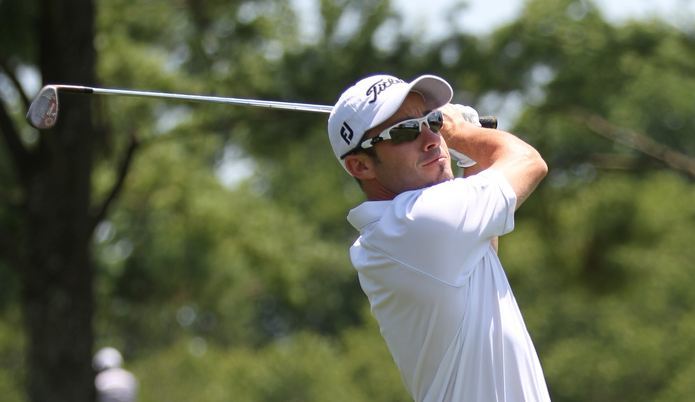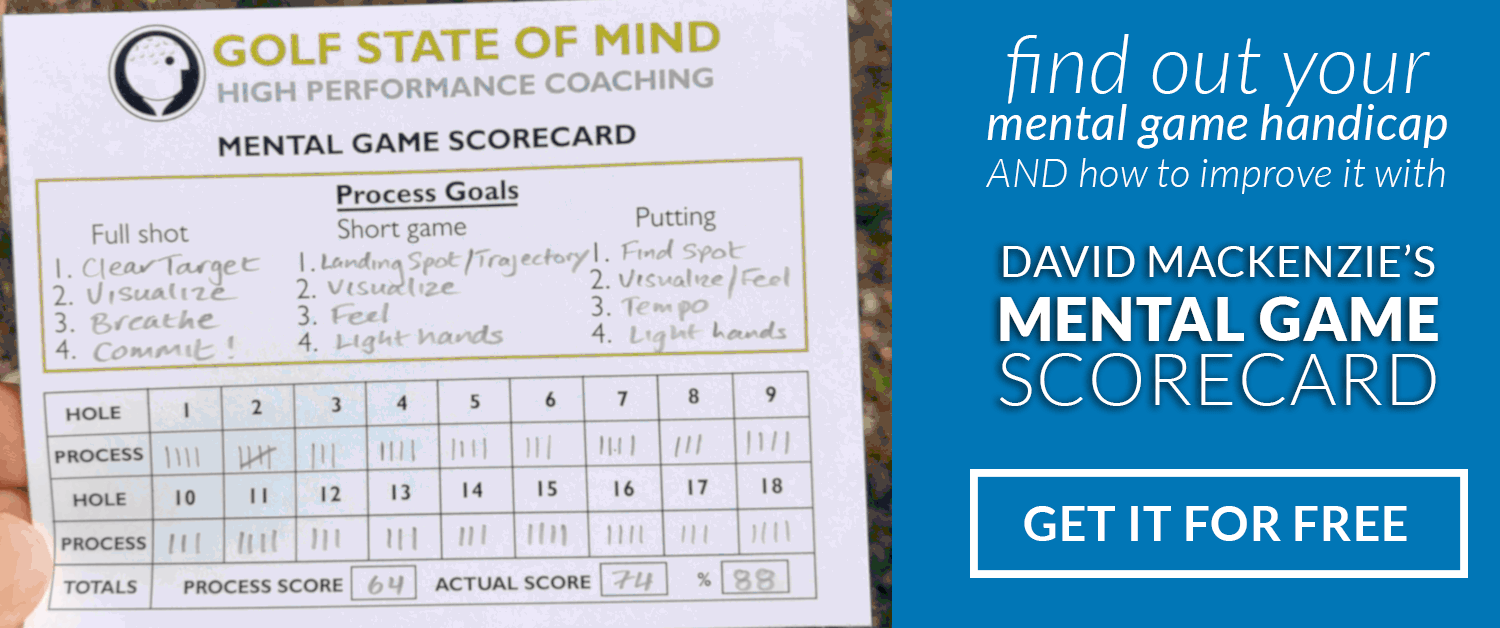
Mental Game of Golf Tip: Go With The Flow.
A critical factor which determines your ability to get into your Flow state is understanding how to control your attentional focus i.e. what is the focus of your attention at any moment in time when carrying out a specific task.
So what is the best way to get into your Flow state? It depends on the physical task you are trying to carry out. There are many life skills you learn to perform in a state of physical flow naturally from riding a bicycle, driving a car or making a sandwich. You don’t have to ‘work’ at getting into the flow state. You perform these tasks FREE from conscious control of your actions, trusting your subconscious mind (sometimes where your life and those of your family are at risk!) to draw upon previously developed procedural memory.
Whilst driving the car, riding a bicycle or making a sandwich, your conscious mind can be occupied with many erroneous thoughts whilst your subconscious mind manages your physical actions. A significant psychological challenge occurs when you engage in activities which require you demonstrate the mental skill of Single Pointed Concentration i.e. target oriented sporting activities like golf, shooting and archery. Clearly you can’t focus your attention on a target whilst erroneous thoughts run through your conscious mind so it needs to be effectively controlled.
However, as soon as you involve the conscious mind in your physical movement flow is lost, which is what happens when you are learning to acquire new motor skill patterns or trying to play golf with swing thoughts. It is only when you switch your attention from internal to an external focus that you can experience the state of flow within your physical actions. So how do you experience flow in your putting stroke and golf swing whilst trying to control it? Can you TRUST your technique and play golf free of swing thoughts and conscious control of your physical actions today I wonder?
A recent theory from sports science suggests that mastery is acquired through deliberate practice and you need approx 10,000 hours of this practice to become expert at a skill. How long did it take you to learn to drive a car do you think? 40 hours? It is not the number of hours of practice which is key but what the focus of your attention is on during those hours which ultimately determines your ability to perform. The quicker you understand how to make the shift from internal to external focus, the faster you’ll acquire the motor skills required to perform.
Tim Gallwey advocates in the Inner Game of Golf the use of verbal techniques like ‘back, hit’ which help you develop your self awareness and a natural golf swing. These techniques promote an external focus and occupy your conscious mind enabling the subconscious mind to manage your physical movement. Unfortunately, your attention can not be on Target whilst you are occupying your attention with mantras but they are useful when developing a new memory for movement.
Taking this learning concept to the next level, Dr Anthony Piparo of Mind Mastery Golf has developed a comprehensive training system for golfers which not only expedites the rate at which you acquire motor skills but also trains your attentional focus appropriately whilst doing so. His work is the missing link in golf education which uniquely binds the mind to body when learning, practicing and playing golf. I recommend you take the time to communicate with him.
It is important to understand that this shift of attentional focus from internal to external happens NATURALLY in many life skills. Unfortunately, this natural shift can be and is frequently inhibited by existing coaching practices which do not take attentional focus into consideration. You may have already discovered that a life time spent focused on your technique in practice can deny you the opportunity to access the performance state consistently in competition.
Clearly, golfers do experience their flow state occasionally (it’s what keeps us going back for more) but ultimately it is with no real comprehension of why it happened or how to get back their consistently when required. “It was one of those days when I was in the Zone!” is commonly heard on the 19th hole. Does golf performance really have to be so ‘hit and miss’? What if the Zone was accessible on demand? It can be when you understand the difference between visual and attentional focus.
Unfortunately you can’t access your flow state, on demand, in competition if you don’t learn how to access your flow state in practice, on demand. You actually have to change the way you practice in order to change the way you wish to play. This involves you wanting to learn how to give up conscious control of your physical actions and fixate your attentional focus on a singular, external focus. What is the one thing which provides the solution to both challenges? The Target.
You may have been lead to believe that the Target creates anxiety and once aligned to it you should not have to pay any further attention to it. This leaves you attempting to play golf like a child plays the party game pin the tail on the donkey. However, your blindfold will not be physical but mental. Go and throw a ball at a target and see how much anxiety exists. None. It is Outcome Orientation which creates anxiety. This will be discussed in greater detail in more mental golf lessons.
Photo by Keith Allison



It’s certainly not a silly question Dave – in fact, it’s a question which lies at the heart of performance.
I support David’s comment, it’s also important psychologically to focus on things which we can control. Our breathing, our focus, our target. Many golfers focus on what they can not control (the score, shot outcome, hazards etc.) Many will look at the target before they step in to execute a shot but it is rarely what they are thinking about whilst staring at the ball, which is where the target is often lost as the conscious mind occupies itself with swing thoughts, the ball or any of the things previously mentioned. Unfortunately, many golfers primarily focus on technique in practice and this is what occupies the mind in play. It’s not easy to hit your target whilst thinking about your technique and attempting to consciously control your actions does little but destroy them in practice and play.
As you will know, you can not be present whilst thinking about your outcome and this ‘future’ thinking will often be accompanied with a spike of anxiety, as we perceive a lack of control over the situation. This anxiety response tenses the muscles and destroys the physical flow. It takes just 1 erroneous thought at the wrong time to destroy years of what is perceived as effective practice but many will continue to believe that their ‘swing’ created the poor outcome, not what they were thinking about.
Being able to keep the target in mind whilst looking at the ball is a skill which I believe separated the elite players like Woods (Mark 1), Nicklaus and Moe Norman. If you ask them how they do it, they coulld not explain (how could they!) and herein lies the golf’s greatest conundrum. Whilst many look at their techniques to close the gap on their peers, the real difference lies within their minds.
I have a saying which is important but not easily understood…”Don’t let your eyes cloud your vision”.
The eyes collect the light energy, what we actually SEE and choose to pay attention is determined by the perceptual system of the brain. The act of sieneg is a ftnucoin of the biran not jsut the eeys. If you don’t have control over what you are attending to in mind, you’ll basically get whatever you choose to focus on and if that’s not the target in golf or basketball, you’re making it very difficult.
Great question Dave.
This may seem like a silly question to some folks but I ask you, in golf what is the specific target?
Hi Dave, really appreciate your comment (not a silly question at all).
The specific target is something as small as possible that you can focus on where you want the ball to start or land. The eyes tell the body what it needs to do, as I’m sure you can appreciate being a basketball coach. I bet a lot of your players “visualize” how the shot looks like and seeing it go in the basket before they throw the ball. Visualization is such a big part of golf.
In golf, you need to have a clearly defined (specific) target before every shot. On a tee shot, this could be a small tree where you want the ball start, so your focus becomes on that. For a chip this is exactly where you want the ball to land on the green. Point being, if you have no target (just aiming at the fairway or green), your execution is nowhere near as good as it could be having a very small target to aim at.
Hope this helps.
David
Pingback: Golf: The Mental Game | Pause-N-Throw Golf Training Aid